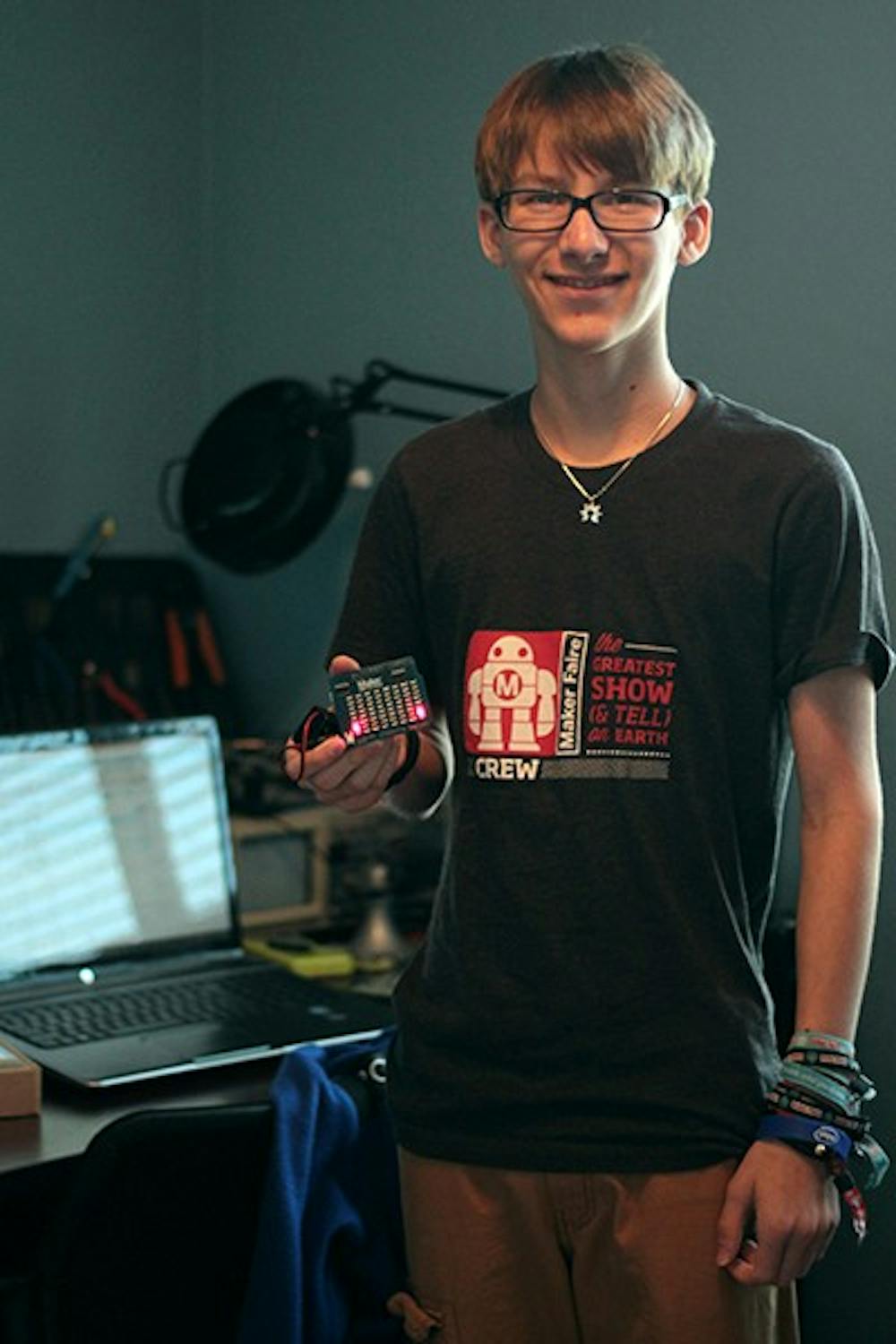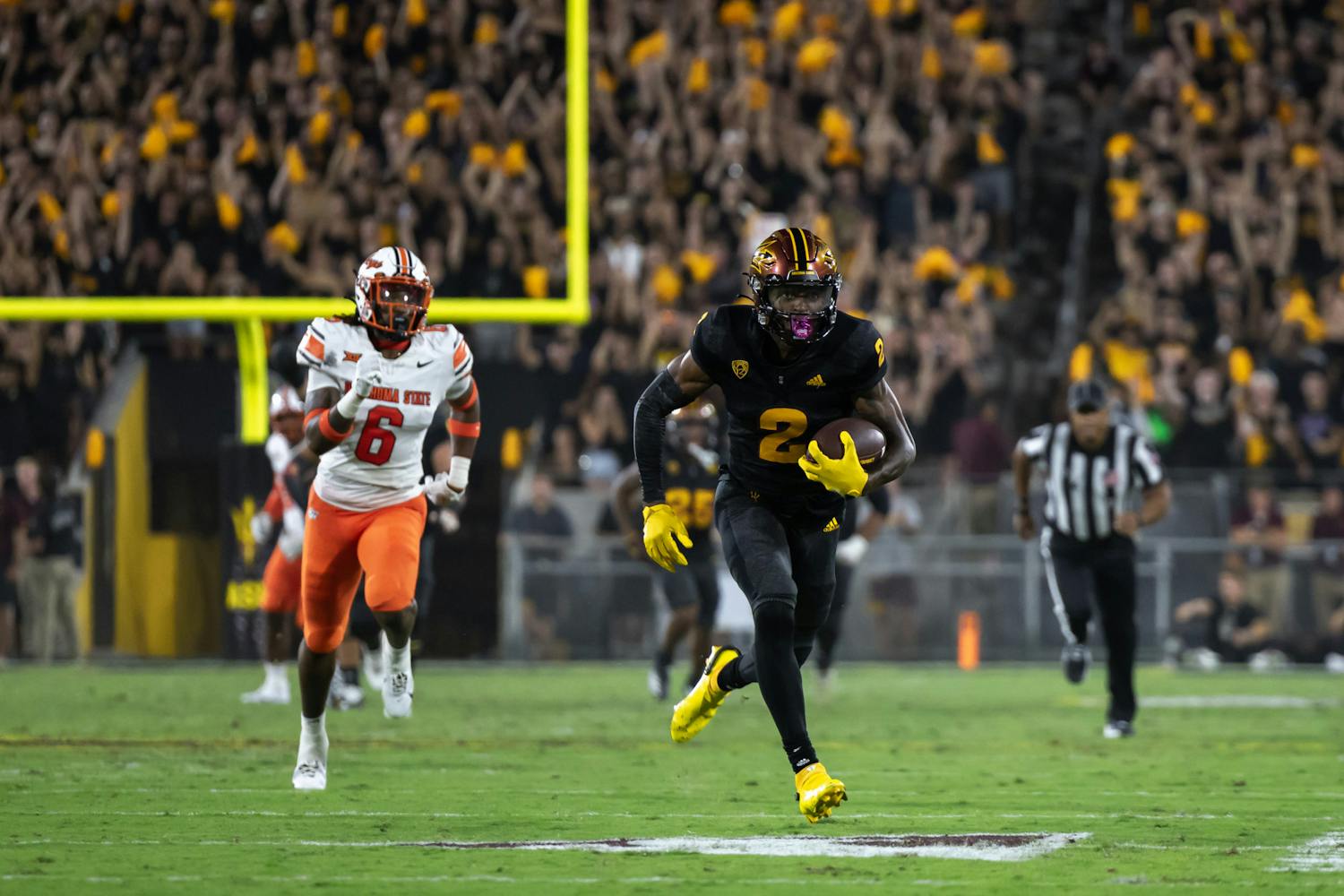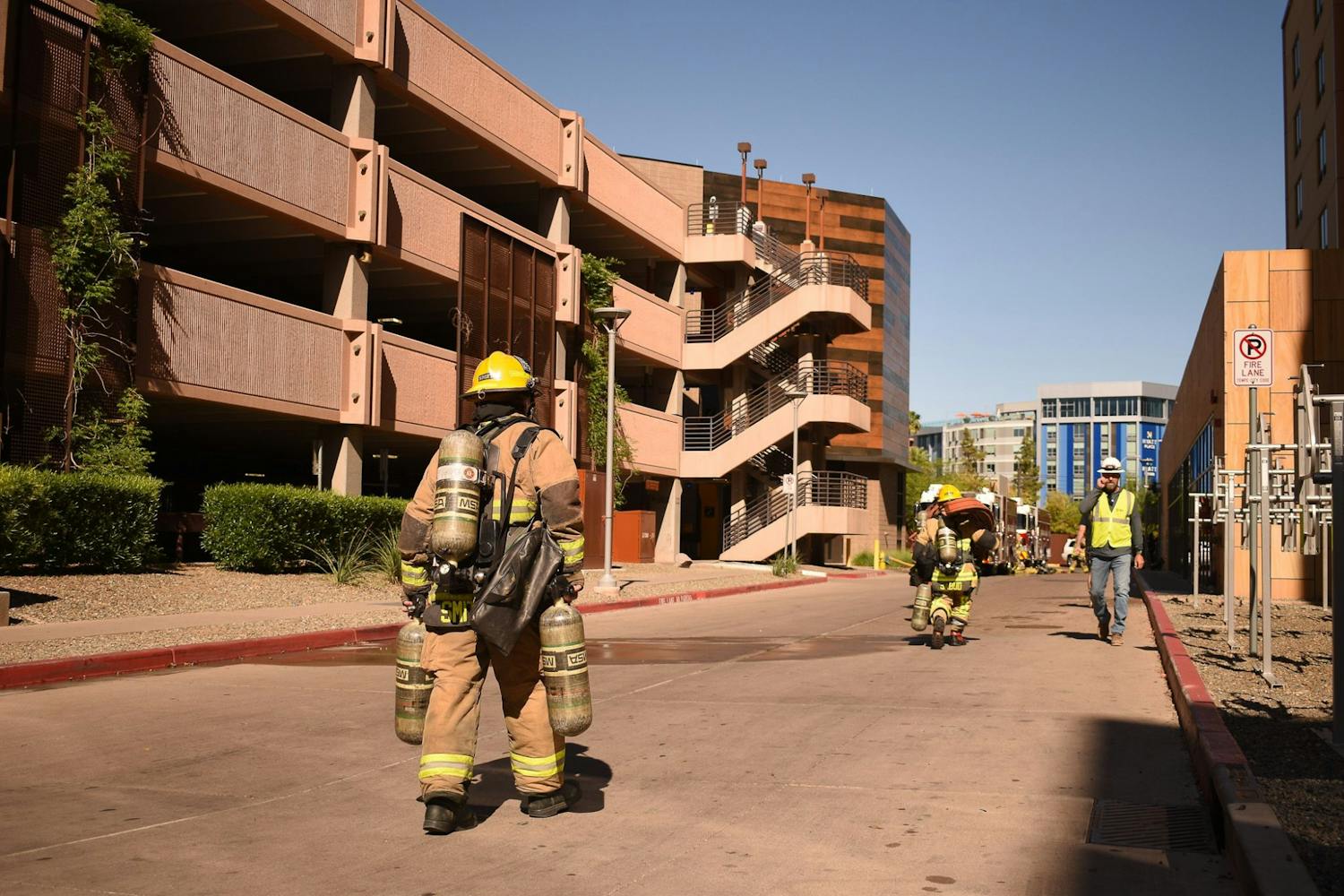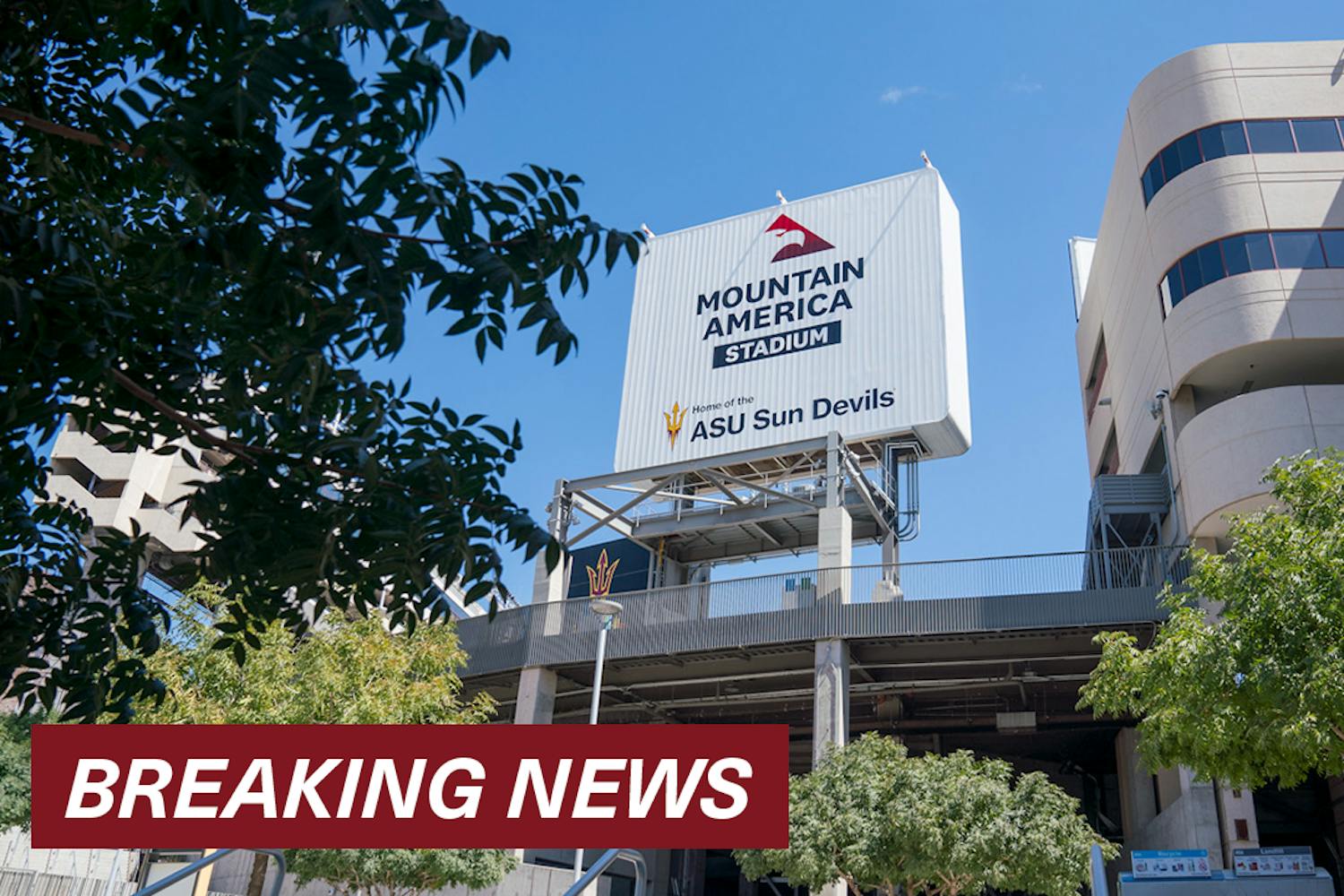 Joey Hudy, a 16-year-old Herberger Academy student, is the youngest person to get a job at Intel and will in the summer. He poses with his SMD LED Arduino shield, a creation he said he is proud of. (Photo by Alexis Macklin)
Joey Hudy, a 16-year-old Herberger Academy student, is the youngest person to get a job at Intel and will in the summer. He poses with his SMD LED Arduino shield, a creation he said he is proud of. (Photo by Alexis Macklin)Joey Hudy, a 16-year-old Herberger Young Scholars Academy student, always liked to make things before he even understood the definition of a maker.
“When I was younger, I used to take random toys apart that didn’t work,” he said. “I’ve always liked making things.”
At only 16, Hudy has already met President Barack Obama, received numerous awards for his engineering creations, been named as one of the 10 smartest kids in the world by Brilliant.org, has been offered a job at the Intel Corporation and is an active participant in Maker Faire.
On Tuesday, Hudy sat inside Michelle Obama's box along with 25 other invited guests at President Barack Obama's State of the Union Address.
According to the White House, "invitees are considered extraordinary individuals, Americans who exemplify the themes and ideals laid out in the State of the Union Address."
Hudy said his talents began to become well-known when he met a man named Jeff Coda from Elenco Electronics. Coda convinced Hudy to start attending Maker Faires.
Maker Faire is an event created by MAKE magazine that gathers tech enthusiasts and crafters of all ages to show what they have made and share what they have learned. It is primarily designed for forward-thinking makers interested in innovating with new technologies.
Hudy has attended Maker Faires in San Mateo, Calif., Detroit, Rome and New York. He has also been to a mini-Maker Faire in Phoenix. This April he will be attending a Maker Faire in Shenzhen, China.
Hudy said Maker Faire is essentially a show-and-tell event among makers.
The maker culture is a contemporary subculture representing technology-based interests that typically include electronics, robotics and 3-D printing. The rise of maker culture is associated with the rise of hackerspaces, which allow hackers and programmers to come together to share ideas and skill sets.
Hudy’s motto, “Don’t be bored — make something,” used to be on a bracelet that helped him raise funds for travel expenses so he could attend Maker Faires and do-it-yourself events around the world.
Although Hudy always had an interest in making things, he only recently started to seriously build things. His first serious invention was his Extreme Marshmallow Cannon, which he brought to the White House.
 Joey Hudy works on his computer, fiddling with his creations. (Photo by Alexis Macklin)
Joey Hudy works on his computer, fiddling with his creations. (Photo by Alexis Macklin)Meeting Obama, manufacturing products
At the 2012 White House science fair, during which Obama announced his plan to request funding for new U.S. Department of Education competition supporting math and science programs, the president examined projects presented by more than 100 students across the country.
Hudy said Cognizant, a company that specializes on information technology, and MAKE were asked to send two kids to the White House Science Fair. They chose Hudy to represent them.
“MAKE asked me, and Cognizant sponsored me,” he said.
Hudy chose to present his Extreme Marshmallow Cannon at the science fair. The cannon, at 30 PSI, can shoot a marshmallow up to 176 feet. Obama partook in assisting Hudy with demonstrating his cannon inside the White House State dining room, during which Obama commented, “The Secret Service isn’t too happy about this.”
Hudy said the president was really cool and nice and that it was really neat to see the White House.
“He seemed very impressed with my cannon,” he said.
Hudy was invited back to Washington on Tuesday to sit in the first lady’s box with other honored guests.
Among several inventions, Hudy also manufactures his own products. One of them is a SMD Arduino shield kit, which helps the user learn to fuse surface mount components as well as providing a bright display for an Arduino.
An Arduino is a single-board microcontroller intended to make interactive applications more accessible. Arduino boards can either be purchased pre-assembled or can be sold as do-it-yourself kits.
Hudy has also produced a 3x3x3 Cube Arduino Shield. The product comes in red and green and can be modified into customizable animations and displays. Both of these products can be found under his blog.
Hudy said his build list is endless. Not only is he passionate about making things, he also wants to share “how-to instructions” with others.
By posting videos on his YouTube channel, he performs tutorials on how to solder, how to Ocilliscope and how LEDs work.
Internship at Intel
When school is out for the summer, Hudy will be going to Santa Clara, Calif., to begin his first day as Intel’s youngest employee.
Hudy was at the Maker Faire in Rome in October giving a speech and Intel was in the audience. That is when the opportunity was presented to him.
“It turned out that Intel was watching and they asked if I wanted a job there,” he said. “The CEO offered me a job on the spot, and a couple weeks later they sent me an application.”
The internship, which is typically given to given to college-age students, was given to Hudy without hesitation.
Vaadra Martinez, an intern program manager at Intel, said in an article by America Now that she hopes to forge a long-lasting relationship with Joey.
Hudy was accepted into a paid internship program and will be working in the new devices group’s project development organization. He will also be working with wearable technology.
On Dec. 16, Hudy attended the Intel new hire orientation. He said the people there were very nice and very friendly.
“I am hoping to keep this job at Intel, even after the internship is over,” he said.
 Joey Hudy's (center) team demonstrates its project at the "hackathon" dubbed #hackPHX on Jan. 17. The submission was called DAUG, a dog carrier that lights up when measuring dog activity. (Photo by Kelcie Grega)
Joey Hudy's (center) team demonstrates its project at the "hackathon" dubbed #hackPHX on Jan. 17. The submission was called DAUG, a dog carrier that lights up when measuring dog activity. (Photo by Kelcie Grega)
HeatSync Labs
Hudy said he enjoys going to a hackerspace called HeatSync Labs during his free time.
“I used to go there every Friday,” he said. “Now that my schoolwork is more rigorous, I can’t go as often as I used to.”
HeatSync Prototyping consultant Jacob Rosenthal said he met Hudy at a Maker Faire.
"His mother showed us his marshmallow cannon," Rosenthal said. "She wanted Joey to meet people who could speak his language."
Rosenthal said since meeting Hudy, he has been mentoring him on his projects.
"An ongoing joke between Joey and I is that he has finished products on the market and I don't," he said. "Mine are still a work in progress."
Rosenthal said he wasn't particularly surprised when he found out that Hudy had gotten an internship at intel.
"I know a lot of Intel guys, and they are smart," he said. "So is Joey."
Rosenthal said Hudy's mother, Julie, is big reason why Joey is where he is now.
"She drove him to Maker Faires and other events like soccer moms take their kids to soccer practice," he said. "She is an important part of what he has become.
On Jan. 18, Hudy participated in his first Hackathon. The event was hosted by HeatSync Labs and was dubbed #hackPHX. Hudy had to compete against 10 other teams to construct an Arduino wearable in less than 24 hours.
Hudy’s team made a dog carrier that was designed to measure dog activity. Hudy said lights go on and off as dog activity increases.
“DAUG stands for Dog Activity Units — Germany,” Hudy said.
The lights on DAUG go from blue to red to green. The DAUG carrier promptly displays feedback through six Neopixel LEDs. Red means there is little-to-no movement, blue means there is some movement and green means there is extreme movement
Hudy's girlfriend, Katie Baerwaldt, was also part of Hudy’s team. Like Hudy, she is a student at the Herberger Academy.
Hudy's team was unique, because it was the only one that made a wearable item for a pet.
“They never said we had to make something that is wearable by humans,” Baerwaldt said.
Herberger Academy
Two years ago, Hudy left a traditional high school environment for a high school that would help him accelerate through high school. Hudy is completing his high school math and science track at the Herberger Young Scholars Academy at ASU.
The academy is part of the Mary Lou Fulton Teachers College. They follow a STEM curriculum which improves competitiveness in the world of math, science and technology. The coursework involved in the STEM curriculum is far more rigorous than a traditional high school curriculum.
Kim Lansdowne, executive director of the academy, said it follows a system called integrated learning.
"Students are given activities that integrate all kinds of different subjects. We don't use textbooks," she said. "Though we all wish our students to continue into Barrett at ASU after graduating, we want them to have the chance to go to any college they want."
Hudy said he found out about the Herberger Academy at a New York Maker Faire.
“Someone came up to me and told me about the school,” he said. “I visited the school, took an IQ test and got in.”
Hudy said although the work is more rigorous than a traditional high school, he is happy to be a student at the Herberger Academy.
The academy is also where Hudy met Baerwaldt.
Hudy said he hasn’t looked at colleges yet, but would like to go into electrical engineering.
“I’ve thought about going to MIT for electrical engineering if they accept me,” he said.
Reach the reporter at kgrega@asu.edu or follow her on Twitter @KelcieGrega




